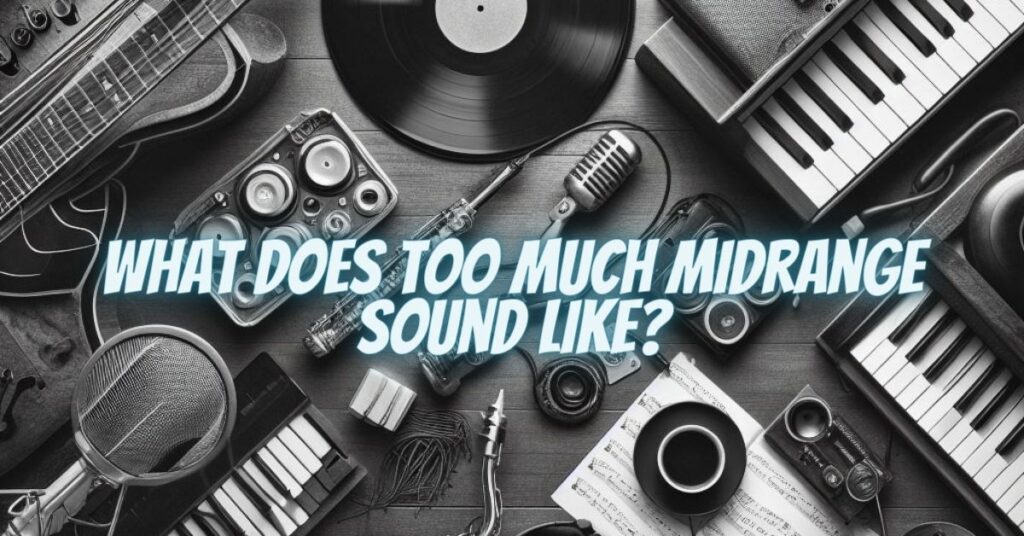Too much midrange can sound harsh, boxy, and nasal. It can also make the music sound muddy and indistinct. This is because the midrange frequencies are the most sensitive to the human ear, so when they are boosted too much, it can be overwhelming and unpleasant to listen to.
Some common signs of too much midrange include:
- Harshness: The music sounds too loud and aggressive, with a piercing or grating sound.
- Boxiness: The music sounds hollow or “boxy,” as if it is being played in a small room.
- Nasality: The music sounds nasal or twangy, with an emphasis on the high-pitched midrange frequencies.
- Muddiness: The music sounds indistinct and muddy, with the different instruments and vocals blending together.
Too much midrange can be caused by a number of factors, including:
- Poor speaker design: Some speakers are simply not designed to reproduce the midrange frequencies accurately. This can lead to a harsh or boxy sound.
- Incorrect equalization: If the midrange frequencies are boosted too much on an equalizer, it can also lead to a harsh or boxy sound.
- Poor room acoustics: The room acoustics can also affect the sound of the midrange frequencies. For example, if the room is too small or too reflective, it can lead to a muddy or boomy sound.
If you are finding that your music sounds too harsh, boxy, or nasal, you can try the following to reduce the midrange:
- Reduce the midrange frequencies on your equalizer. This can help to tame the harshness and boxiness of the sound.
- Move your speakers away from the walls and corners of the room. This can help to reduce the reflections that can contribute to a muddy or boomy sound.
- Add acoustic treatments to the room, such as carpets, curtains, and bass traps. This can help to absorb the sound waves and improve the overall acoustics of the room.
If you are still having trouble with too much midrange, you may want to consider upgrading your speakers to a pair that is designed to reproduce the midrange frequencies more accurately.
Here are some tips for avoiding too much midrange in your music:
- Use a reference track. When you are mixing your music, use a reference track that you know sounds good. This will give you a good idea of how your music should sound.
- Use a spectrum analyzer. A spectrum analyzer can help you to see how the different frequencies in your music are distributed. This can help you to identify any areas where the midrange frequencies are boosted too much.
- Cut the midrange frequencies where they are not needed. For example, if you are mixing a song with vocals, you may want to cut the midrange frequencies in the guitars to make the vocals more prominent.
- Use a midrange boost sparingly. If you do need to boost the midrange frequencies, do so sparingly. A small boost can go a long way.
By following these tips, you can avoid too much midrange in your music and achieve a more balanced and natural sound.


